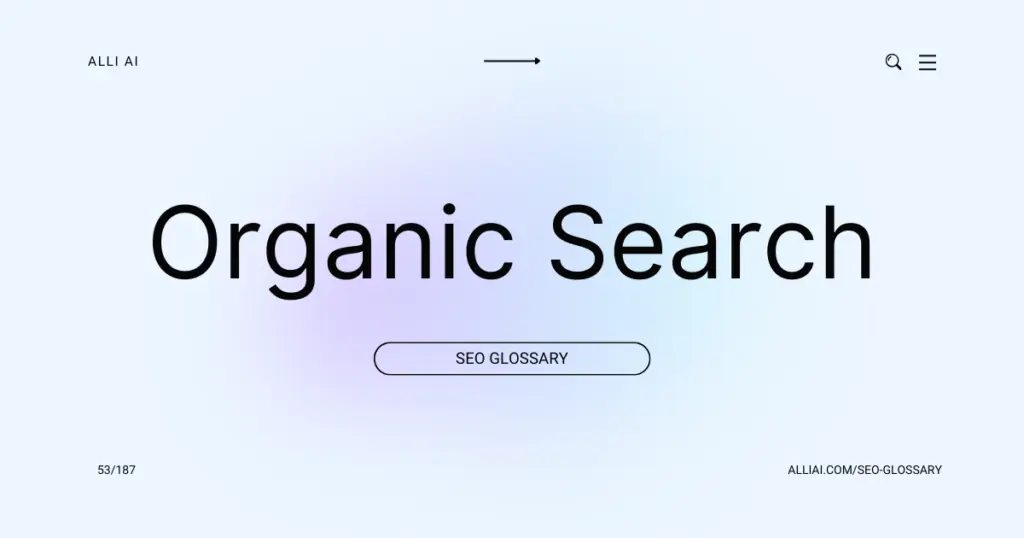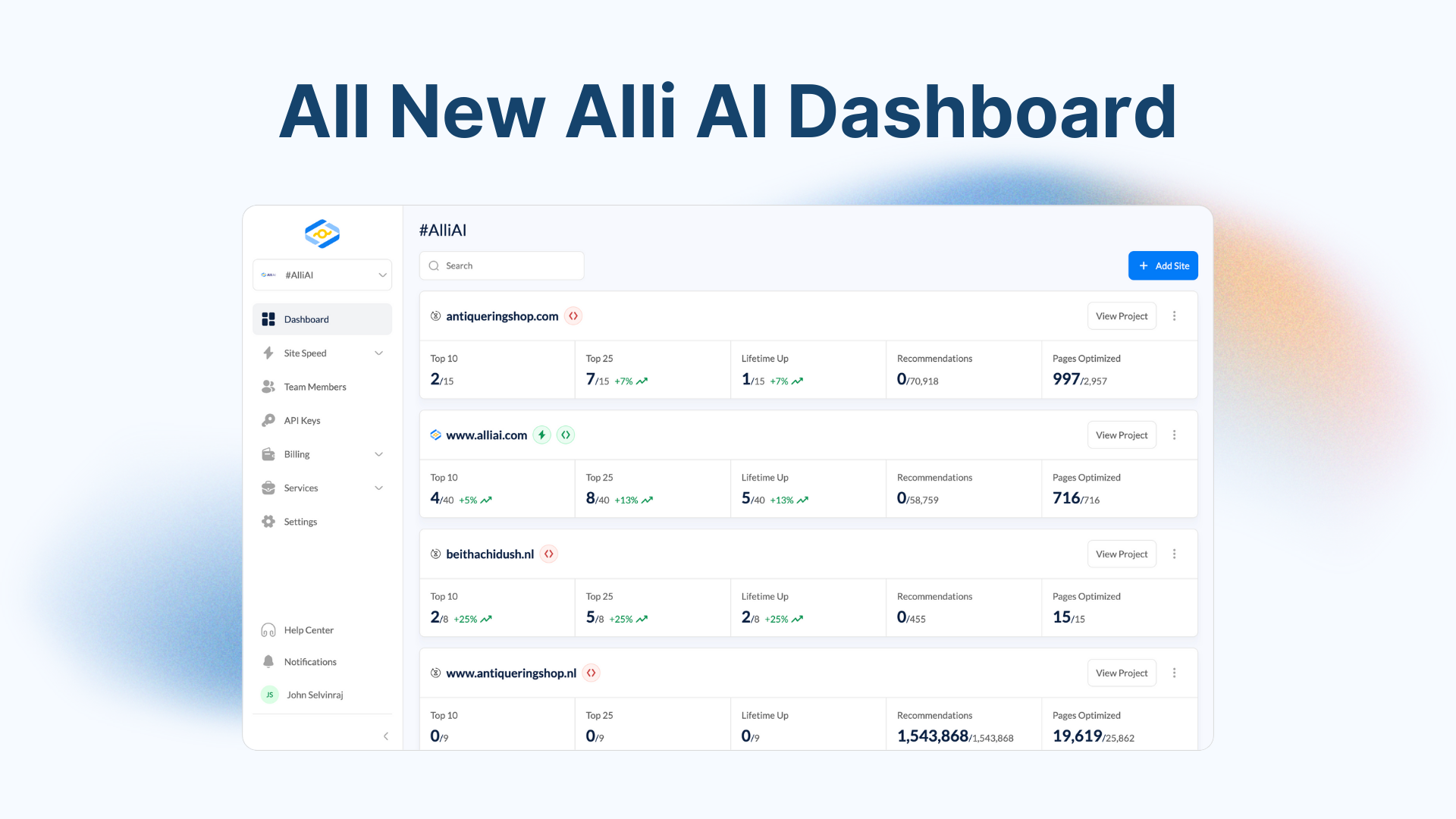What Does Organic Search Mean?
Organic search refers to the results from a search engine that appear because they are relevant to the search terms, not because they are advertisements. These results are determined by the search engine’s algorithm, and it is the main method through which most people find information online.
Where Does Organic Search Fit Into The Broader SEO Landscape?
Organic search refers to the natural search engine results that are not influenced by paid advertising. SEO activities are primarily aimed at improving website rankings and visibility within these organic search results. Activities like keyword research, content creation, backlink building, and on-page optimization all focus on enhancing elements that search engine algorithms use to rank pages naturally. This contrasts with paid search, where positions on search engine results pages (SERPs) are bought through advertising campaigns such as PPC (pay-per-click). While both are essential components of digital marketing, organic SEO is about earning traffic without direct payment to search engines.
Real Life Analogies or Metaphors to Explain Organic Search
Organic search is like gardening. Just as a gardener plants seeds, waters them, and patiently waits for them to grow into flourishing plants, SEO specialists plant keywords, optimize website content, and build quality links, nurturing them over time to cultivate a strong, natural presence in search engine results.
Think of organic search as fishing with a net. Rather than targeting one specific fish with bait (paid advertising), organic search casts a wide net, pulling in all sorts of fish (traffic) over time, relying on the natural currents (search engine algorithms) to guide them into the net.
Organic search can be likened to building a reputation in a small town. Initially, only a few people might know you, but as you engage with the community, help out at events, and become known for your good deeds and reliable nature (quality content and SEO), more people begin to know and trust you, naturally spreading your reputation through word-of-mouth (search rankings).
How the Organic Search Functions or is Implemented?
1. Crawling: Search engines use bots (also known as spiders) to crawl the web and discover content by following links from one page to another. Content that can be crawled includes all types of digital content such as web pages, images, videos, PDFs, etc.
2. Indexing: After a web page is discovered, the search engine renders the content of the page just as a browser would, in order to understand and analyze the content. The content along with key signals such as keywords, freshness, and metadata are stored in an index.
3. Ranking: When a user performs a search, the search engine scours its index to find the most relevant content based on the user’s query. Various algorithms consider factors like relevance, authority, user experience, page speed, and mobile-friendliness to rank content.
4. Retrieval: The final set of results is then compiled and presented to the user as the search engine results pages (SERPs). These may include a variety of formats such as snippets, videos, images, and news depending on the intent of the query and the content available in the index.
Impact Organic Search has on SEO
Organic search drives targeted traffic to websites through relevance and authority within search engine results pages (SERPs). This enhances SEO performance by boosting visibility and credibility. High organic rankings often correlate with improved user experience, as search engines prioritize sites that are user-friendly, fast, and provide valuable content. Effective organic search optimization leads to increased time on site, lower bounce rates, and higher engagement, amplifying conversion opportunities. In the long term, sustained organic visibility fosters brand trust and loyalty, contributing significantly to business growth and online presence.
SEO Best Practices For Organic Search
1. Keyword Research: Identify relevant keywords using tools like Google Keyword Planner, SEMrush, or Ahrefs. Focus on both high-volume keywords and long-tail keywords that are specific to your niche.
2. On-Page SEO:
– Title Tag: Include primary keywords at the beginning of the title tag. Keep it under 60 characters.
– Meta Description: Write a compelling meta description with primary and secondary keywords. Keep it under 160 characters.
– Headings (H1, H2, H3): Include keywords in headings, especially H1. Use H2 and H3 for subsections and variations of your main keywords.
– URL Structure: Ensure URLs are short and include a target keyword.
– Alt Text for Images: Describe images using keywords where appropriate.
– Content Optimization: Use keywords naturally in the first 100 words, throughout the content, and in the conclusion. Ensure content is thorough and addresses user intent.
3. Technical SEO:
– Mobile Friendliness: Ensure the website is mobile-friendly.
– Site Speed: Improve site loading times using tools like Google PageSpeed Insights.
– Secure Socket Layer (SSL): Make sure your website uses HTTPS.
– XML Sitemap: Create and submit an XML sitemap to search engines.
– Robots.txt: Ensure your robots.txt file is not blocking search engines from crawling important pages.
4. Content Creation:
– Quality Content: Produce high-quality, engaging, and original content that addresses the needs and questions of your audience.
– Content Freshness: Regularly update content and add new relevant content.
– Multimedia Elements: Include images, videos, and infographics to enhance engagement.
5. Link Building:
– Internal Links: Use internal links to connect your content and direct users to relevant pages.
– Backlinks: Acquire high-quality backlinks from authoritative sites within your industry.
– Broken Link Building: Identify and replace broken links on your site and others.
6. Social Media Integration:
– Social Sharing Buttons: Incorporate social sharing buttons to encourage content sharing.
– Active Social Media Presence: Maintain an active presence on key social platforms to drive engagement.
7. Local SEO (if applicable):
– Google My Business: Set up and optimize a Google My Business account.
– Local Listings: Ensure business is correctly listed in relevant local directories.
– Local Keywords: Include location-based keywords in your content and metadata.
8. User Experience (UX):
– Easy Navigation: Ensure site navigation is intuitive and simple.
– Clear Call-to-Actions (CTAs): Use clear CTAs to guide users towards desired actions.
– User Engagement: Optimize page elements to increase time on site and reduce bounce rates.
9. Performance Monitoring and Evaluation:
– Google Analytics: Install Google Analytics to monitor traffic, bounce rates, and other important metrics.
– Search Console: Use Google Search Console to track performance and identify issues with your site.
– Adjustments: Regularly review performance data and adjust your SEO strategy as needed.
Common Mistakes To Avoid
1. Ignoring Search Intent: Ensure content aligns with user intent—informational, navigational, transactional, or commercial.
2. Neglecting Mobile Optimization: Implement responsive design and ensure fast loading speeds on all mobile devices.
3. Overlooking Local SEO: Optimize for local search with location-specific keywords and Google My Business listings.
4. Using Outdated SEO Practices: Avoid practices like keyword stuffing; focus on creating valuable, engaging content.
5. Inconsistent Content Publishing: Maintain a regular publishing schedule to keep your site fresh and engaging.
6. Poor Site Structure and Navigation: Organize site hierarchy logically; use breadcrumbs and a clear menu structure.
7. Failing to Optimize for Voice Search: Optimize for conversational keywords and question-based queries.
8. Not Using Secure HTTP (HTTPS): Secure your site with HTTPS to protect users and improve trust.
9. Lacking Quality Backlinks: Prioritize earning high-quality backlinks over quantity; avoid purchasing links.
10. Ignoring Website Speed: Continually monitor and optimize site speed for a better user experience and improved SEO rankings.
11. Missing Quality Content: Focus on well-researched, comprehensive content that provides real value to the audience.
12. Skipping Meta Tags and Descriptions: Use relevant keywords in meta tags and create compelling meta descriptions.
13. Not Tracking Analytics: Regularly check analytics to understand traffic sources and behavior to refine SEO strategies.
14. Failing to Adapt to Algorithm Updates: Stay informed about the latest search engine updates and adapt strategies accordingly.
15. Ignoring Social Signals: Engage on social media platforms to drive traffic and improve visibility and indirect SEO benefits.
Avoid these pitfalls by staying informed, focusing on user experience, and adhering to best SEO practices.






